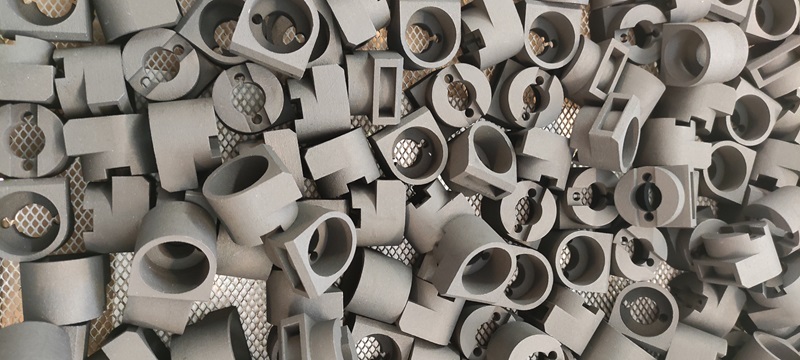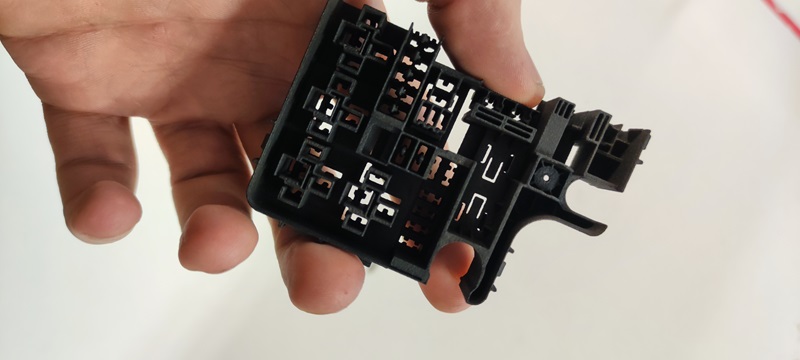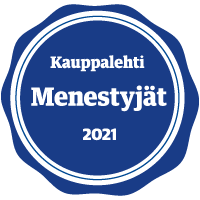Why Does Serial Production with 3D-Printing Make Sense?
Why is 3D printing chosen as a production method in various industries and for manufacturing different parts and products? This article is part of our new blog series where we focus, one at a time, on different reasons for choosing 3D printing over traditional manufacturing methods. In this article, we’ll focus on the advantages of 3D printing in serial production.
Materflow produced hundreds of thousands of parts in 2023. 90 % of the products printed by Materflow were part of the finished product series.
Serial production can refer to very different sizes of series in different contexts. A series can range from a few pieces to tens of thousands of pieces. To get an idea of the size of a 3D printable series, consider that 90% of all products printed by Materflow fit into a 10x10x10 cm box.



Cost savings in serial and small-batch production
One typical reason for any business-related decision is, of course, cost. Some costs and cost savings are easier to grasp directly, while others arise indirectly through time savings, logistics, and storage.
Cost savings in manufacturing
One of the advantages of the 3D production method in serial production is that the method cuts out the extra and heavy initial investments related to serial production.
In 3D production, there is no need for mold and tool manufacturing, so the product can be brought to market quickly. This also applies to so-called “bridge production,” where some parts are ordered molded, but production can be started through 3D printing.
Bridge production utilizes 3D printing as a “bridge” between traditional manufacturing processes. 3D printing allows production to start immediately to bring a new product to market.
Transition to the traditional process can occur later when the necessary tools and other requirements are ready. The benefits of bridge production with 3D printing in mass production include:
- Quick launch of a new product
- Flexibility when demand for a new/final product is uncertain
- Acceleration of product development
- Adequate number of products for testing (before full-scale production)
3D printing can also produce parts that act as a “bridge” in situations where batch sizes are too small for traditional mold use.
Savings in logistics and lifecycle costs
Let’s assume you could order the part you need from China. Besides the delivery time, you may face the required minimum order quantity and the storage of extra parts.
By 3D printing, you save on delivery time, get exactly the number of parts you need, and avoid storage costs. You’ll likely also save on the actual cost per piece.
3D printing solves many other storage problems. Especially in the food industry and elevator manufacturers, have to supply spare parts for machines that may be decades old. This often requires storing molds and/or maintaining a spare parts inventory.
A digital spare part ensures the availability of the part practically forever, and storing the 3D model costs nothing. The digital spare part doesn’t wear out and doesn’t need to be physically stored.
One storage problem may also be the requirement to maintain certain spare parts while plastic parts deteriorate and degrade on the shelf over time. For example, the military needs various plastic spare parts for protective gear, helmets, weapon slings, plastic clips, etc.
Due to regulations and safety reasons, these parts need to be replaced as they weaken and become brittle over time. They need to be ordered in large quantities at once, but by 3D printing, they can be produced exactly as needed.
With the EU’s ecodesign directive, for example, spare parts for appliances should be available for up to 15 years after manufacture.
Instead of maintaining a large (and potentially outdated) inventory, spare parts can be manufactured on demand by 3D printing.
Thus, 3D printing can also bring clear savings when considering the lifecycle costs of produced parts.
In addition to production, the entire life cycle of a part includes aspects such as storage, the cost of which can be around zero when 3D printing.





